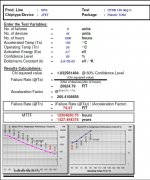yet another interesting part?
found this one http://diodes.com/datasheets/DMN3730U.pdf
negatives: max 30V Vds and sot-23....
positives: 70 pF ciss and maybe high Yfs at low Id
and here is a similar one in P channel...
http://diodes.com/datasheets/DMP31D0U.pdf
found this one http://diodes.com/datasheets/DMN3730U.pdf
negatives: max 30V Vds and sot-23....
positives: 70 pF ciss and maybe high Yfs at low Id
and here is a similar one in P channel...
http://diodes.com/datasheets/DMP31D0U.pdf
Last edited:
any News from pcb front?
or the final scheme & values for 5V dac-reg? (sorry but I wish I were able to read the threads)
thanks in advance
or the final scheme & values for 5V dac-reg? (sorry but I wish I were able to read the threads)
thanks in advance
I have a pcb with salas shunt V1.0 and I need 3,3v out.now the lowest I can get is 3,55v so instead of changing to BJT at the output can I use a 1N4007 in series with the possitive to lower the output 0,7v.
Is there any dissadvantage of doing this??
Is there any dissadvantage of doing this??
So I change to BJT then,the funny thing is that I have another pcb exactly the same and it can go to 3,3v or even lower,it must be the component tolerance then?
Edit:Could you explais about the Dynamic impedance
Edit:Could you explais about the Dynamic impedance
Last edited:
Its the VGS tolerance mainly. There is a delta ohm regarding the steepness of a diode's curve, that will add to Zo and modulate with the load's current draw dynamic.
An lm317 with a LED in the adj lead gets close to 3v3.I have a pcb with salas shunt V1.0 and I need 3,3v out.now the lowest I can get is 3,55v so instead of changing to BJT at the output can I use a 1N4007 in series with the possitive to lower the output 0,7v.
Is there any dissadvantage of doing this??
Just select 317 & LED to achieve as close as you need.
hi all,
maybe some you remember a discussion concerning semiconductor reliability relative to operating temperature
i sent e-mail to a few manufacturers for j111 jfet and fairchild responded to me with the attached.
maybe there is a chance it may contribute to the subject.
this link may also help to understand
http://www.hp.woodshot.com/hprfhelp/4_downld/products/xrs/at41511_r.pdf
maybe some you remember a discussion concerning semiconductor reliability relative to operating temperature
i sent e-mail to a few manufacturers for j111 jfet and fairchild responded to me with the attached.
maybe there is a chance it may contribute to the subject.
this link may also help to understand
http://www.hp.woodshot.com/hprfhelp/4_downld/products/xrs/at41511_r.pdf
Attachments
Last edited:
BTW salas,
have you played with bsp129?
i built a b1 buffer and have no means to measure anything
but my ears tells me that it sounds fabulous in signature but maybe it is noisy...?
EDIT: buffer is between sound card and f4 ''sans'' jfet. BTW i did not compared it yet to complementary k170/j74....
also, f4 drives directly lowther pm6c or Axiom bookshelves without voltage gain stage
have you played with bsp129?
i built a b1 buffer and have no means to measure anything
but my ears tells me that it sounds fabulous in signature but maybe it is noisy...?
EDIT: buffer is between sound card and f4 ''sans'' jfet. BTW i did not compared it yet to complementary k170/j74....
also, f4 drives directly lowther pm6c or Axiom bookshelves without voltage gain stage
Last edited:
I will, I have it in mind, but I was doing other stuff, some pro speaker protos for bars and clubs. I expect them noisier than JFETs, that is for sure, also some degeneration resistors to keep them from drifting. Did they prove necessary in yours?
degen source resistor i did put.
did not tried without them but played with values from 10 to 2.5(used what i had)
but some russian guy on the web already built a commercial version( i think) for headphones with 1 ohm res.
also, sharing heatsink has fantastic tracking(used thermal paste)
did not tried without them but played with values from 10 to 2.5(used what i had)
but some russian guy on the web already built a commercial version( i think) for headphones with 1 ohm res.
also, sharing heatsink has fantastic tracking(used thermal paste)
- Status
- Not open for further replies.
- Home
- Amplifiers
- Power Supplies
- The simplistic Salas low voltage shunt regulator
